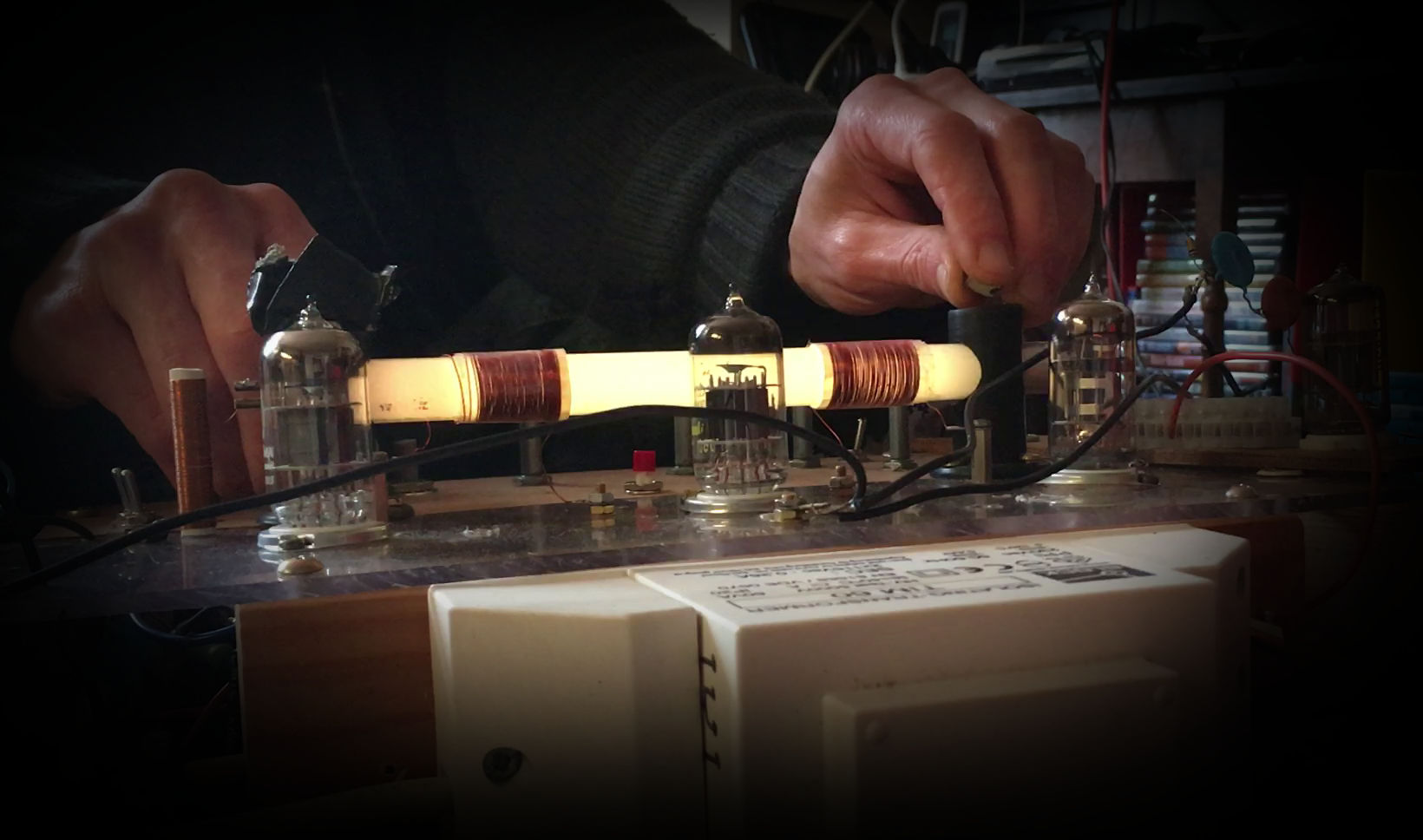
Background
So, how can a plasma be used to control audio with magnetic fields?
Well, yes it seems - to some extent at least. We found magnetic control could work well for noise generated as current passes through a plasma. These signals were also found to be sensitive to RF energy applied to the plasma, and by varying tube voltage and RF power, a wide range of sounds could be produced at different conditions.
This page is a bit of a scrapbook, with technical details, demos of prototypes in development, and other background stuff.
Technical details - plasma control
Electrical signals are produced by fluctuations that tend to occur naturally as electric current passes through a plasma.
A plasma is an electric flame - glowing gas, energetic enough to be ionised and electrically conductive. It exists in a wide range of states, from inside a neon indicator bulb to the heart of a star, or lightning bolt. Plasma's behaviour in a circuit can vary from smoothly conductive to noisily unstable, and is sensitive to magnetic fields.
Making audio with plasma is not new in itself, but our machine controls the stability of the plasma (and so the sound) by separately varying the passage of current and level of excitation of the plasma, producing a wide range of sounds at different conditions.
Increasing the voltage/current generally raises the noise frequency/pitch, which can also be subject to sudden changes if the plasma alters state. Increasing excitation generally causes a progressive filtering and distortion of the signal, until the plasma stabilises and sound disappears.
Magnetic fields cause electron paths to curve, which extends their lifetime in a plasma and so increases the local efficiency of the discharge. This means a hand-held magnet can have a significant influence upon the sound, varying with proximity and location along the tube.
Modulating current and excitation can cause surprisingly vocal noises - experiments with T5 fluorescents have sounded like a zoo - distorted howls, shrieks, squeaks and whistles, and other vocal sounds.
We do not understand in detail how every particular audio noise is created. A DC glow discharge self-organises into distinct spatial regions between anode and cathode, forming sheath structures around the electrodes themselves. In order to pass a current, the plasma has to maintain a space potential distribution that can let charge flow smoothly, or can undergo periodical evolution if that is not possible. The acoustic frequencies and observed voltage dependence are characteristic of relaxation oscillations, the RF excitation affects plasma stability by separating physical requirements for sustaining the discharge from those that enable current to flow. Some sounds produced with a magnet held close to the anode appear to result from the formation of extra plasma structures, and electrode influence may well be responsible for much of the observed variation between tubes.
Plasma in a synth
After th
Project direction
In the short term Telmatronics are developing a simple synthesiser, that can be used with commercial fluorescent tubes to experiment with a new way of noise-making. These tubes are currently being phased out, but we have supplies for the near term and are starting to develop purpose-built tubes.
Prototypes and early demos
The short film below shows our first dual-modulated prototype:
And this video demonstrates some various sounds and basics of how they are controlled:
Different fluorescent tubes can produce quite different sounds. This video has clips of six types of tube making a range of noises:
Clips below show experiments sending control signals to the prototype from other instruments.
This video shows what happened when we plugged in a CV signal from an Arturia sequencer to a modulatuion channel of the TM01. The keyboard is also sending a timing signal to a Korg Monotribe.
Another experiment, using the gate signal from the KeyStep to send a step waveform... making some crazy noises!
Trivia
Why telmatron?
Telmatron means something like 'swamp tube' - this was chosen to describe the effect of the plasma excitation control, which does progressively swamp the audio signal, and also seems appropriate given the wet noises some tubes produce.
What about the earlier instruments?
The telmatron is not the first instrument to generate sound using a gas discharge - various early electronic instruments/electrophones such as the Trautonium also relied upon current fluctuations in small neon tubes and thyratrons. The non-linearities of gas discharges are problematic for maintaining a consistently reproducible pitch, and various schemes were devised to keep the plasma oscillations phase-locked with a reference signal. They were not widely used beyond the mid-20th century.
Links
These sites have been interesting and/or helpful for this project. Much information about plasmas and synthesisers is online, wikipedia is brilliant.
Fascinating history of electronic instruments
https://120years.net/wordpress/
Good synth news sites
https://www.matrixsynth.com/
https://www.synthtopia.com/
https://synthanatomy.com
Great collection of unusual instruments and resources
http://www.oddmusic.com/
Anarchic site featuring some crazy synthesisers
http://www.deviantsynth.com/
Fantastic resource for valve circuit design
http://www.valvewizard.co.uk/
Another great site for valve electronics
https://www.angelfire.com/electronic/funwithtubes/
GBVP - a project to restart valve manufacture in the UK
https://brimaruk.com/menugbvp/great-british-valve-project-2/
